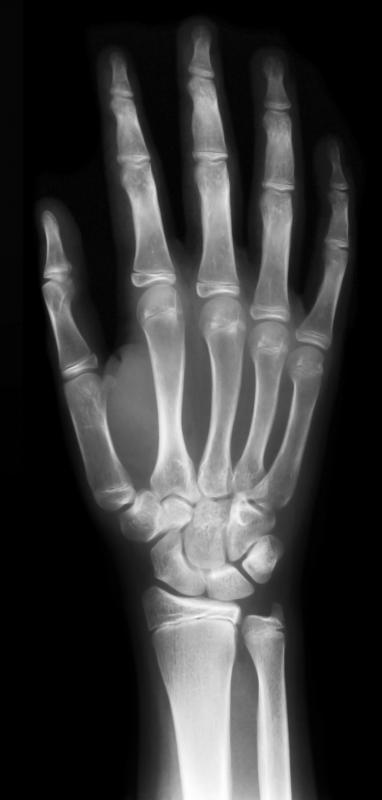At WiseGEEK, we're committed to delivering accurate, trustworthy information. Our expert-authored content is rigorously fact-checked and sourced from credible authorities. Discover how we uphold the highest standards in providing you with reliable knowledge.
How do I Choose a Radiology School?
Radiology is the study of images of the human body made by radiant energy. To become a radiologist, you have to complete training at an accredited radiology school. This means that the radiology school is legally recognized and that you will be qualified to work as a radiologist after you complete your studies. Training can take anywhere from two to four years. In some cases, prerequisite study may be required, so make sure you satisfy the necessary requirements when looking at such schools.
A radiologist has to interpret the information produced from images created with various forms of radiant energy, including x-rays, ultrasound, and radioactive and magnetic imaging. He then works together with a physician to provide a diagnosis. In some cases, the radiologist will use these technologies to treat a patient. Radiology is a profession in high demand and can be a financially lucrative career.

Good radiology programs emphasize that they intend to produce competent radiologists. This means that the program is looking to meet the current standards of training professionals in the medical field, while also providing you with a chance at future employment. A prestigious faculty ensures that the radiology school is well regarded and has a tradition of producing skilled professionals.

Radiology schools should offer clinical practice and training. This will include theoretical lectures and work in the hospital with experienced radiologists so that the student can gain knowledge. Access to all necessary training equipment is imperative so that you will have experience with the various radiological tech. Students should be taught to perform all the diagnosis training required for the study of radiant images.
You need to acquire a practical background with technologies such as x-rays, but also be able to communicate how such processes work in order to explain to the patient the exact procedure being performed. It is also important for the radiological program to teach you about new technologies, according to the changes and advancements occurring in the radiology field. This includes familiarity with technology such as magnetic resonance imaging (MRI) and computer tomography scanning (CTS).
A good radiology school not only provides you with a solid academic background, but a chance for vocational success in the future. As a radiologist, you will be able to choose between academic medicine or practice-based radiology. If you look at past graduates of a prospective school and take time to research their post-graduate careers, this should give you a satisfactory indication of the merits of your potential school.
AS FEATURED ON:
AS FEATURED ON:












Discuss this Article
Post your comments